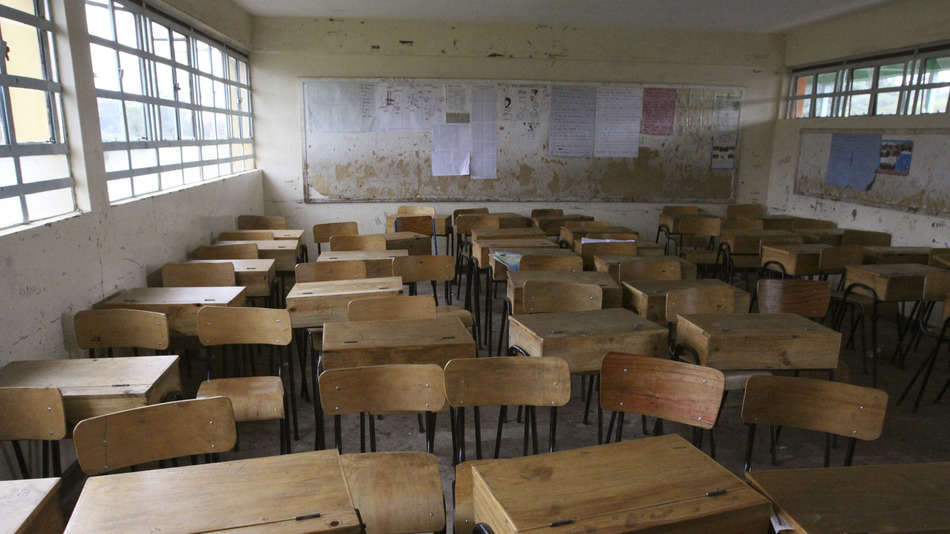Fewer Americans are going to preschool and college compared to other nations
The United States continues to fall behind internationally in producing a college-educated workforce as other nations send more of their citizens to university. And in the very early years, many countries are now sending a much higher percentage of their kids to preschool than the United States.
“The U.S. hasn’t backslid, but other countries have made big gains,” said OECD Education Director Andreas Schleicher, in a pre-publication briefing with journalists.
In the past, the U.S. ranked second in the world in the percentage of adults with some sort of college education, ranging from a post-high-school vocational degree to a Ph.D. Today, the U.S. has slipped to fifth position.
Related: Number of Americans with college degrees growing more slowly than advocates want
In several countries, nearly 60 percent of 25- to 34-year-olds have a college education. Korea tops the list, with nearly 70 percent of this age group earning a college degree, a huge increase from their older generation of 55- to 64-year-olds, among whom fewer than 20 percent have a college education.
41 percent of 3-year-olds and 66 percent of 4-year-olds are enrolled in preschools in the U.S., compared to more than 70 percent in Organization for Economic Cooperation and Development nations
In the United States, by contrast, only 46 percent of the younger generation has a college education, not significantly more than the 41 percent of the American older generation who went to university.
Because of gains in other countries, Schleicher said it would be “hard” for the U.S. to attain its goal to become the nation with the highest proportion of 25- to 34-year-old university graduates by 2020.
Related: Despite efforts to increase them, university graduation rates fall
Schleicher said some nations are making these “impressive” gains in college education without blowing up government budgets. For example, Australia has expanded use of student loans, which students pay back as a percentage of their salary after graduation.
Other countries spend more, with direct subsidies or by keeping tuition free or very low. Even with huge government outlays, Schleicher says that college education remains a cost-effective investment for governments because college educated students continue to secure higher paying jobs after college and eventually pay higher taxes.
In other words, the global rise in college-educated students hasn’t yet produced a glut of college-educated workers. “Demand is rising faster than supply,” said Schleicher. “Employers are still willing to pay the college-educated higher wages”
Presidential candidates have discussed similar plans for the American higher ed system, but adopting some of these policies might prove trickier in the United States. Schleicher said that student loan schemes need an “intelligent regulatory system” where university tuition and fees are capped, which the United States federal government doesn’t do.
Related: Sanders’ free college plan would take from the rich to give to the rich
Meanwhile, foreign students appear to be choosing U.S. universities less often to study abroad. In 2000, almost a quarter of international students who left their home countries for college came to American institutions. That’s dropped to 19 percent in the most recent report. It’s not that fewer foreign students are coming to the U.S. each year. But there are more and more of them, especially from Asia, and a greater share of them are choosing to study in the United Kingdom, Australia, Russia and Japan.
“The U.S. hasn’t backslid, but other countries have made big gains.” OECD Education Director Andreas Schleicher
On the early childhood front, the United States has one of the lowest enrollment rates among OECD countries, where, on average, more than 70 percent of young children attend preschool. That’s up sharply from an average of 40 to 50 percent a decade ago.
But in the United States, only 41 percent of 3-year-olds and 66 percent of 4-year-olds are enrolled in preschools. “It’s an area where the U.S. trails quite a bit behind,” said Schleicher.
Schleicher added that he’s seeing proof that early childhood education makes a difference. He’s said that kids who attended early childhood programs tend to score higher on the Program for International Student Assessment, which assess 15-year-olds around the world in reading, math and other subjects. Even between two children from families of similar income levels, Schleicher explained, the one who attended preschool tended to post higher academic outcomes in high school.
The report had a bit of good news that may surprise many Americans. For the first time the OECD compiled data on how much students are tested in various countries. Despite popular impression that U.S. school children are tested too much, Schleicher said many countries give their students even more tests.
“The U.S. is not a country of heavy testing,” said Schleicher.
This story was produced by The Hechinger Report, a nonprofit, independent news organization focused on inequality and innovation in education.





